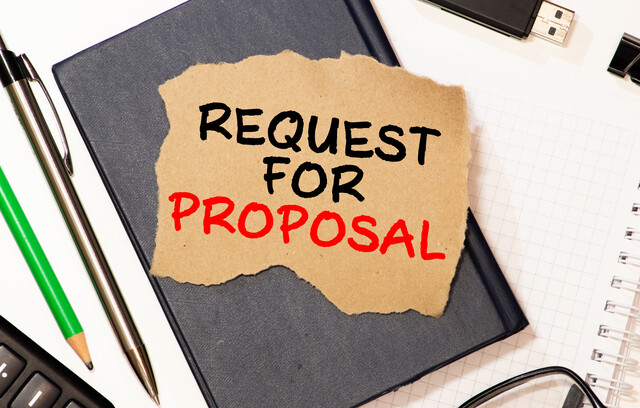The difficulty....is not to write, but to write what you mean; not to affect your reader, but to affect him precisely as you wish.
Robert Louis Stevenson
Business writing, unlike academic writing, is meant for a varied audience and is action-oriented. In academic writing, the audience might be teachers and professors, and your aim is to impress them with your expertise on a particular subject. Business writing is a completely different ball game. It is a means to an end.
Through your business communication you seek to achieve a resultant action, and you want to convince the reader to make it. Business writing can take various forms and may target wide cross sections of a potential audience, each of which will have a different set of needs and requirements. As the creator of business communication, you will seek to understand the pulse of your audience so that you can deliver accordingly.
We will discuss three critical aspects of business communication that need to be considered before starting:
1) audience analysis, 2) organization of ideas, and 3) guidelines for how to overcome writer's block and create successful business communications.
Audience analysis: Traditionally, your audience is the group of people that reads a certain piece of written communication from you. An audience can be both homogeneous and heterogeneous. In business writing, your audience could be your co-worker, boss, client, subordinates, board of directors, vendors, and even consumers. Before you begin creating a business document, you need to determine your audience.
Here are a few of the questions you will need to ask yourself before you begin. These will go a long way in helping you analyze your audience:
Who are the audience members? Are they men or women? What age are they? What is their background, including education, occupation, and orientation in terms of society, politics, and faith?
What level of information is appropriate for your readers? Are they lay readers who have no information about the subject, or managers who have some background in the subject but require more information, or absolute experts who will be the most challenging of the lot?
What is the context in which they will view your writing? Are you sending them personalized letters or e-mails, or is it a sales letter or a proposal? Are they reading your piece in an annual report, magazine, Internet site, or journal?
Once these questions are answered, you will have a clearer picture of your objectives, as well as the purpose of your writing. On the basis of this, you can determine the content of your writing and the tone of voice and language to use. This way, you tailor your document according to the needs of your audience.
Business writing is purposeful writing. It motivates the reader to perform an action through creating hard-hitting content that uses either informative or persuasive techniques to get the desired results. Once you have identified the audience, get down to organizing your thoughts.
Want to learn more? Take an online course in Business Writing.
Thought organization: Business writing is professional. You need to make the reader believe that you are knowledgeable, even while persuading them to perform a certain action. The document you create has to really involve the reader to be effective, so pay careful attention to how and what you write.
Begin by getting your thoughts in order; a good place to start is by asking yourself questions such as the following:
-
Why am I writing this document? What is the purpose?
-
Why would the reader go through it, and how would it help him or her?
-
What action do you want the reader to take when finished reading the document?
After you have answered these questions, take a pen and paper and write down every thought you have in mind. This will help keep you from forgetting things, as well as bring a structure to your documents. Depending upon your audience analysis, you have to follow up the earlier introspection with these questions.
These questions will help you get into your readers' minds:
-
What does the reader want to know from your document?
-
What questions might the reader ask?
-
What information should you provide to the reader in answer to the premeditated questions?
Based on these questions, go about formatting your document. Logically, you might want to present your case and at the end of your argument give your specific sales pitch. However, if you see it from a reader's point of view, the main idea or pitch is what they are most interested in and that is what you should lead with. You need to grab your audience's attention at the very beginning to keep readers from losing interest in your document.
State the main idea in the first paragraph of a document or as the subject line of your letter or e-mail. Also make sure that the way you present your message is interesting and hard-hitting; weak leading statements will disinterest your reader. Instead of saying, "We would like to inform you about a new product," say, "Here's a new product that will reduce your electricity bill by 50 percent." Readers need to know what is in it for them before they decide to continue reading any communication. So hook your readers in the beginning by showing them something lucrative or profitable that they stand to gain.
Now that you have identified your audience and organized your thoughts, the next step is to actually start creating the content. Many professionals who are strong writers get stuck in a classic phase of what is known as "writer's block." They know everything about the subject, they even have their finger on who the audience is and what they want to say to them; but they just cannot seem to get the hang of how to say it.
Writer's block is traditionally defined as a person's inability to:
-
create fresh text;
-
polish and trim text that is already created;
-
meet project deadlines on time.
Why do talented people suffer from writer's block? Two reasons might be procrastination and fear. While the first is self-explanatory, we need to take a look at the latter. What is this fear? Sometimes it is a fear of being judged and ridiculed by what you write. It also can be a form of performance anxiety, in which you think you need to be perfect and are terrified of doing anything less than perfect. It is a vicious circle: You want to be perfect, but you want to stick to the rules, so you cannot write anything creative. The result is contrived text and a writer's block.
Here are a few tips on how to overcome your writer's block and get on with your writing:
-
Go easy on yourself. You do not have to come up with perfect text in the first draft itself; it is completely okay to rewrite and edit things. You might need to create numerous drafts and add and delete things, but do not become bogged down by that.
-
Do not obsess. If you find that you cannot think of anything to write and simply are staring at the blank screen, take a break. Go do something else: Walk your dog, listen to your favorite song, do anything to take your mind off the block. Then come back to your task with a fresh perspective.
-
Break the rules: Most writers get stuck on the opening sentence of any article. The failure to come up with a good line can be very painful. If you find that you cannot think of a good first sentence, move on. No one said that the first sentence had to be written first; if you have ideas, move on to another part of the article and write it first.
-
Prepare: Before you sit down to write, think about the task at hand. Go over the audience analysis and the notes you made on what you want to say. This way you will refresh your mind and be prepared.
-
Concentrate: Often lack of concentration results in writer's block, so switch off your cell phone if you have to, and give your document 100 percent of your attention.





























